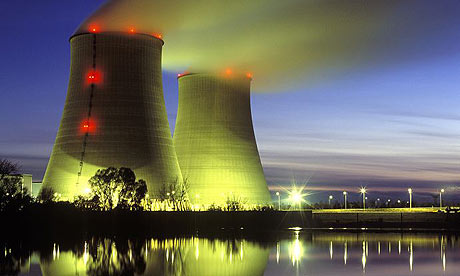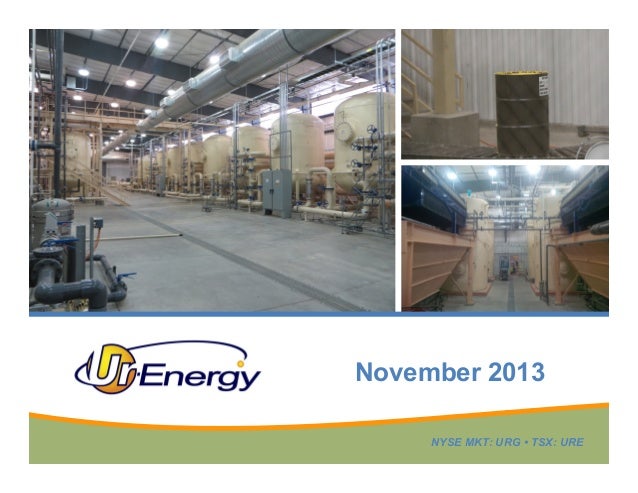All
nuclear power plants operate on the same principle, specifically on the
use of heat that's released during the fission of uranium in a
sustained chain reaction. Heat makes water boil, with the steam causing
the turbine to rotate and generate electricity. To regulate the emission
of heat, special-purpose substances are introduced into the active area
of the reactor to slow down the ongoing nuclear reaction.
The
first experimental reactor started operation in Chicago in 1942. Its
output was negligible, barely sufficient to sustain the chain reaction.
It was all top secret, so no photographers were ever let in and no
photos of the reactor were therefore made.
1946
saw research reactors start operation in Canada and at Moscow's
Kurchatov Institute research centre. Now, electricity began to be
generated on industrial scale for the first time in 1954, at the Obninsk
nuclear power plant near Moscow. A nuclear physicist and an expert on
nuclear power production, Igor Ostretsov, says that graphite was used at
Obninsk to slow down the nuclear reaction.
"Graphite-moderated
reactors emerged from so-called industrial reactors that were used to
obtain plutonium for nuclear bombs. This gave rise to the making of
high-power channel-type reactors, of which Russia has built 14,
including the four that were used at the Chernobyl nuclear power plant.
One of the four is known to have exploded. It was good as a
plutonium-breeding reactor, but bad as a power producer. As they became
bigger in size, these reactors revealed a lot of problems that
eventually resulted in a disaster".
The advantage of graphite reactors is that they run on low-enriched or even natural uranium, and boast low construction costs.
Russia
is the only country to operate these kinds of graphite reactors today.
Moscow has made a decision not to prolong their service life.
Differently built graphite reactors are also operational in the UK. The
high-power channel-type reactors will be replaced by safer boiling water
reactors, says a senior expert with the Institute for Energy and
Finance, Sergei Kondratyev, and elaborates.
"The
basic difference is that the new reactors have a stable negative
feedback, in other words, if the chain reaction grows too fast, the
reactor will shut itself down. That was not often the case with the
high-power channel-type reactors. This is very important in terms of
safety, for another Chernobyl plant-type accident is just ruled out. The
new reactors have several coolant circuits, which makes radioactive
contamination of the coolant or scatter radiation quite unlikely".
A
number of boiling-water reactor modifications have been used
extensively across the world recently. But let's not forget about yet
another type of reactors, namely fast-neutron reactors. Here's more from
Sergei Kondratyev.
"Russia
has currently only one fast-neutron reactor operational, at the
Beloyarsk nuclear power plant, in the Sverdlovsk Region. Russia is the
leader in building such reactors and has recently helped build one in
China. But the developed countries, such as Japan and France, have
frozen programmes involving the fast-neutron reactor technology, which
is quite expensive. But these reactors could help settle the problem of
reprocessing and regenerating nuclear fuel, since we realize that
uranium is a non-renewable fuel".
Today
Russia and other countries build generation III+ nuclear reactors,
which by far surpass the IAEA safety requirements. The reactors have by
far higher temperature of the nuclear reaction, which boosts energy
efficiency. Designers have been thinking of ways to produce generation
IV reactors. Surprisingly, one of the six types of future reactors will
use graphite. The first generation IV nuclear power plant will hardly be
built before 2030, and this is what Sergei Kondratyev says about the
output of this kind of reactor.
"Two
trends are likely to emerge in building generation IV reactors. The
first one is that the new reactors will boast an increasingly great
energy output, which is understandable. A power plant area matters,
because areas are mostly densely-populated and land is expensive. On the
other hand, we've seen a keen interest in building small compact
nuclear power plants, because power-consuming industries have recently
been located in remote areas. I believe we will live to see both
mini-nuclear power plants and extra-power reactors".
World
nations can go on developing ways to produce nuclear power for the next
60 years or so, when we run out of all proved uranium reserves, Igor
Ostretsov says. According to the expert, scientists should learn to use
accelerators to ensure direct uranium-238 and thorium combustion. And
then we'll take all nuclear power production from the Earth to the Moon,
sometime in the late 21st century.



 Australian Uranium News - Research
Australian Uranium News - Research











